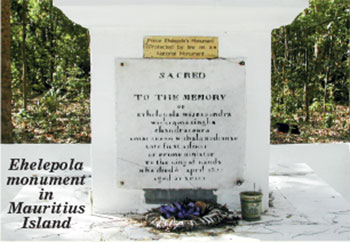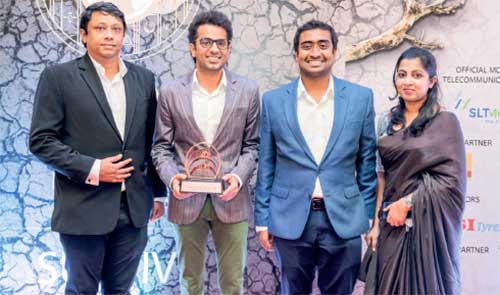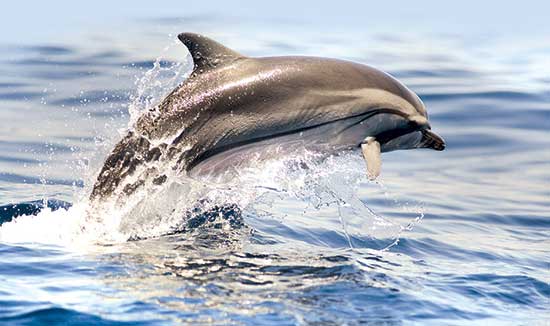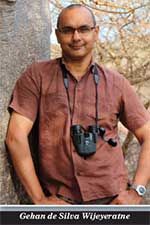Life style
A gem of a Monument

Ratnapura National Museum housed in the historical Ehelepola Walauwa is being renovated and conserved, the first ever exercise of its kind since its establishment. The archaeologically important monument which was closed for a few years is soon to be reopened to the public.
Story and Pix by Randima Attygalle
Nestled in a sprawling green garden of nearly eight acres is a ‘gem of a different kind’ in Ratnapura- the land of gems and the domain of God Saman. An oasis in the midst of the busy Ratnapura town, a drive canopied by its ‘forest garden’ brings a visitor to the stately mansion. The legend has it that once there was a secret tunnel to access this building, its entry point no longer to be found. Its impressive lobby replete with an elaborate wooden doorway, a high ceiling and thick brick walls reflect Dutch and British architectural influence. A dolawa (palanquin) and a wooden oruwa, both several centuries old, are exhibited here today.
Originally built between 1811 and 1814 for the occupation of Ehelepola Maha Adikaram when he was serving as the Disawe of Sabaragamuwa, the building known as Ehelepola Walauwa, was later used as the official residence of the government agents of the Sabaragamuwa Province during the British administration, earning the common reference of Disapathi Medura. Its spacious rooms with high ceilings enabling natural ventilation today serve as the seven galleries of the National Museum of Ratnapura dedicated to the historical and cultural heritage of the Sabaragamuwa Province.
 The history of the Ratnapura National Museum goes back to 1946. ‘The exhibition of the first set of museum objects took place in April, 1946. These were brought from the Colombo National Museum, particularly for their safety from any possible danger in Colombo during the Second World War,” says the Director, Cultural, Department of National Museums, Senarath Wickramasinghe. The museum objects were initially exhibited in a private residence in Weralupe, close to the Ratnapura town. In 1957 it was shifted to a building near the old CTB Depot in the town. The museum was opened to the public on May 18, 1988 in the present Ehelepola Walauwa, after the premises were acquired by the Department of National Museums. It was officially declared as an archaeological monument on September 3, 1993 under a special gazette notification by the Department of Archaeology.
The history of the Ratnapura National Museum goes back to 1946. ‘The exhibition of the first set of museum objects took place in April, 1946. These were brought from the Colombo National Museum, particularly for their safety from any possible danger in Colombo during the Second World War,” says the Director, Cultural, Department of National Museums, Senarath Wickramasinghe. The museum objects were initially exhibited in a private residence in Weralupe, close to the Ratnapura town. In 1957 it was shifted to a building near the old CTB Depot in the town. The museum was opened to the public on May 18, 1988 in the present Ehelepola Walauwa, after the premises were acquired by the Department of National Museums. It was officially declared as an archaeological monument on September 3, 1993 under a special gazette notification by the Department of Archaeology.
The seven galleries of the museum are dedicated to the gems, rocks and minerals of Ratanpura, extinct fauna of Ratnapura, pre-history of the region, History of Ratnapura, textiles, ceramics and jewellery, Sabaragamuwa dance form and rituals and traditional industries and customs of Ratnapura respectively. Among the special objects on display are the sword of Ehelepola Adikaram and the four-poster bed used by Ven. Balangoda Ananda Maithriya Thera.
Besides the objects of antiquity are newly done models reflecting Ratnapura’s well known gem mining, Balangoda man from the pre-history and Sabaragamuwa dance. Modern lighting systems in place enhance the finer intricacies of the objects on display. The gallery, ‘Extinct Fauna of Ratnapura’ features bones of some of the animals which lived in the Quaternary Period (the period between 2 to 500 million years before present) unearthed from gem pits in the area and replicas of some of these animals are found in the Paleo Biodiversity Museum Park- the first of its kind in the country, Wickramasinghe explains.
“Certain fossilized parts of large mammals which lived in the Quaternary Period have been found in the Ratnapura District among the layers of deposits in the areas such as Getahetta, Eheliyagoda, Kuruwita, Kalawana, Pelmadulla, and Kahawatta. These deposits are referred to as ‘Ratnapura deposits’ which belonged to the latter stages of the geological history; Pleistocene and Holocene (two million years before present) periods, found in wet soil layers of gem mines,” he said.
The fossils of the extinct species of animals in the Ratnapura District were first studied by the late Director of the Colombo National Museum, Dr. P. E. P. Deraniyagala. His research had confirmed that three species of elephants, two species of unicorns, one species of hippopotamus, buffalo, hunting dog, lion and wild pig had inhabited this region. The replicas which are exhibited in the Ratnapura Museum are based on the fossil data obtained from such studies.
It has also been recorded that Ratnapura district claims evidence representing all ages of prehistory in Sri Lanka. It is presumed that the stone tools that have been unearthed from wet layers of ‘Ratnapura mines’ represent lower and middle stages of the pre-history and also presumed that those tools belong to the period between 250,000 – 125,0000 years from today. The oldest skeletons of Homo sapiens who lived in South Asia have been found in Fa Hien Caves (Pahiyangala Caves) in Bulathsinhala and Batadombalena in Kuruwita. “These findings take us back to a definite time frame of 40,000 years from today and the findings of Batadombalena takes us back to 35,000 years, offering us clear evidence that prehistoric men continuously lived in these places up to 3500 BC,” points out Wickramasinghe. The excavations conducted in Bellanbendipelassa, an open space in the Ratnapura District located in the Walawe Valley had uncovered a burial ground of pre-historic men. The Pre-History Gallery of the Museum visually presents these findings.
An assortment of kitchen and agricultural objects of antiquity, exquisite jewellery worn by the Ratnapura aristocracy, ancient Buddha statues from temples, old coins, ceramics, garments and swords add to the grandeur of the museum. The Medicinal Garden, Bamboo Garden and Endemic Plant Garden surrounding it afford a tranquil setting to the stately building housing the museum meriting promotion among local and foreign visitors.
The first ever ‘conservation-renovation’ exercise since the establishment of the Ratnapura National Museum was a demanding task resulting in closure for several years during which the work was completed, remarks the Director General of the Department of National Museums, Sanuja Kasthuriarachchi. “In the process, while being conscious of the original architectural features of this archaeological site, we also had to do justice to Ehelepola Maha Adikaram who occupied this mansion as well as the historical and cultural heritage of Ratnapura,.” she explains. “The conservation project also aspires to be aligned with the proposed five-year Gem City Master Plan of the Urban Development Authority..”
“Here, we will be taking measures to conserve and develop the Bio Diversity Park of the museum as well, so that the premises can be promoted as a sustainable tourist attraction under the Master Plan,” she added.
*********************************************************************************************************
Ehelepola Maha Adikaram
 He was born to a noble family from the village of Ehelepola, nine miles from Matale and was educated by the Yatawatte Maha Thera before joining the Royal court. His first appointment was to the post of Paniwidakara Nilame by the King and later succeeded Meegastenne Adikarama as the Second Adikaram. Ehelepola was also appointed as Disave of Sabaragamuva which was held by Meegastenne. Following the death of Pilimatlawe Nilame, Ehelepola was appointed as the Maha Adikaram in 1811 under the reign King Sri Vikrama Rajasinha.
He was born to a noble family from the village of Ehelepola, nine miles from Matale and was educated by the Yatawatte Maha Thera before joining the Royal court. His first appointment was to the post of Paniwidakara Nilame by the King and later succeeded Meegastenne Adikarama as the Second Adikaram. Ehelepola was also appointed as Disave of Sabaragamuva which was held by Meegastenne. Following the death of Pilimatlawe Nilame, Ehelepola was appointed as the Maha Adikaram in 1811 under the reign King Sri Vikrama Rajasinha.
Following the brutal execution of his entire family by the King, (including his eldest son, the child hero Madduma Bandara), he aided the British in launching an invasion of the Kandyan Kingdom. Ehelepola became part of the British administration of Kandy but soon came under suspicion during the Great Rebellion of 1817–18. The royal courtier was arrested by the British and exiled to Mauritius Island along with several Kandyan Chiefs in 1825. He died on April 4, 1829 in Mauritius Island. His tomb, which is a protected Monument, bears the inscription: ‘Sacred to the memory of Ehelepola Wijesundara Wickramasinghe Chandrasekara Amarakoon Wahala Mudianse, late First Adigar or Prime Minister to the King of Kandy, who died on 4th April 1829 aged 57 years”.
- News Advertiesment
See Kapruka’s top selling online shopping categories such as Toys, Grocery, Flowers, Birthday Cakes, Fruits, Chocolates, Clothing and Electronics. Also see Kapruka’s unique online services such as Money Remittence,News, Courier/Delivery, Food Delivery and over 700 top brands. Also get products from Amazon & Ebay via Kapruka Gloabal Shop into Sri Lanka.
Life style
LUXASIA aims to lead luxury beauty’s growth in Sri Lanka

Sri Lanka is a land renown for stunning natural beauty. Yet, LUXASIA still managed to usher in a different kind of beautiful to the market through its expertise in luxury beauty retail and omni-distribution.
In November 2019, LUXASIA unveiled its inaugural classy beauty counters at Odel, One Galle Face. Since then, it has brought enchanting fragrances from luxury brands such as Burberry, Calvin Klein, Gucci, and Marc Jacobs, as well as trendy skincare from KORA Organics to beauty-lovers in an exquisite and captivating retail format.
Now, having successfully overcome the challenges in 2020 imposed by COVID-19 and related lockdowns, LUXASIA is ready and excited to thrill Sri Lankan consumers again. This time, it is with the launch of both skincare and make-up collections from the prestigious Japanese beauty brand, Shiseido. Arriving with a glamorously magnificent pop-up at One Galle Face from 8 to 14 February 2020, LUXASIA promises to bring memorable consumer experiences and a feast for the eyes that showcases the best in Japanese beauty.
Leading up to this pop-up, LUXASIA partnered the Key Opinion Leaders (KOLs) and top influencers of Sri Lanka to excite the beauty community with a sneak peek of what Shiseido have to offer. This campaign garnered more than 100,000 social interactions, with over 1.2 million social media impressions, piquing consumers’ fascination in Shiseido’s award-winning and best-selling serum, The Ultimune Power Infusing Concentrate.
Looking ahead into 2021, LUXASIA aims to continue delighting consumers with even more fresh retail innovations to spice up the luxury beauty scene in Sri Lanka. Soon, fragrance enthusiasts can expect a unique pop-up of all the scents that Luxasia carry, featuring new launches from Davidoff and Calvin Klein, as well as other interesting novelties. Beauty-lovers can also expect more limited edition products and gifts-with-purchases, interesting workshops, as well as seasonal offerings in the coming months. Concurrently, LUXASIA also aspires to continue grooming the Sri Lankan beauty community through more entertaining collaborations with KOLs throughout 2021.
LUXASIA sees immense potential in Sri Lanka’s fast-growing beauty market and has been its voice in the international beauty industry. For some time now, LUXASIA has been relentlessly reaching out to numerous luxury beauty brands across to world to interest them in Sri Lanka. While it is encouraging to see the first-fruits, LUXASIA is aiming much higher. Forging ahead, LUXASIA strives to champion and lead the growth of luxury beauty in Sri Lanka, through even more partnerships with great brands, and by continuously delighting consumers.
Life style
Newly published guide opens many windows on whale watching

by Ifham Nizam
Shipping lanes to the south of Dondra pose the threat of ships colliding with whales as the area has very rich marine life which also attracts whale watching boats, says prolific wildlife writer and photographer Gehan de Silva Wijeyeratne, author of the recently published ‘A Naturalist’s Guide to the Mammals of Sri Lanka’.
He says international shipping industry organizations have written to the government to push back the existing shipping lanes and if no action is initiated, there is the danger of whale watching boats colliding with vessels.
Dr. Susannah Calderon and her colleagues at the University of Ruhuna have recommended the shipping lanes be moved 15 nautical miles south. The cost impact to all concerned will be negligible, but it significantly improves safety at sea, especially at night when the sea is dotted with the lamps from hundreds of small fishing crafts in the path of giant container carriers.
“It is primarily a safety issue though an important secondary impact will be that it reduces fatal collisions with whales, while generating favourable publicity for the government of Sri Lanka. It boils down to moving the shipping lanes further south and saving lives, Wijeyeratne stressed in an interview with The Sunday Island.
Asked what’s special about his latest publication, he said: “This is the first photographic field guide which covers nearly all of the mammals found in Sri Lanka. It covers 96 per cent of the land and marine mammals. The book, which is portable and affordable, also contains a large number of images from 40 photographers which are practically useful in the field to identify  a mammal to species level. It also covers a number of small, discrete, nocturnal mammals whose existence that even many local wildlife enthusiasts will not be aware of.”
a mammal to species level. It also covers a number of small, discrete, nocturnal mammals whose existence that even many local wildlife enthusiasts will not be aware of.”
On the book’s coverage of the marine mammals, Wijeyeratne said there are two noteworthy aspects. Firstly, it covers all the species recorded in Sri Lankan waters expect for one, the Omura’s Whale. This will be included in a second edition. Secondly, it uses images of the whales and dolphins (cetaceans) which will show the animals the way a whale watcher will see them on the surface.
Artwork that shows the whole animal is important, but in field conditions, they are often of limited value to identify cetaceans which only show a little of their upper body in sections at a time they surface.
Q: You were the first to publicize that Sri Lanka was the best location for Blue Whale sightings and offered the best chance to see a superpod of Sperm Whales. Can you explain briefly how you set about branding Sri Lanka as a top international destination for whale watching?
A:
I started with field work to ascertain the facts and launched a media campaign initially with Jetwing Eco Holidays and Jetwing Hotels which was supported over many years by the Sri Lanka Tourism Promotion Bureau (SLTPB) and others in the media and tourism business. I have published 37 articles on whale watching in Sri Lanka. The first, in May 2008, was pivotal as it boldly stated that Sri Lanka was best for Blue Whales. This set everything in motion. My articles give due credit to many people who were a part of this amazing story. This includes Dr. Charles Anderson who first told me it would be feasible to see Blue Whales from the South.
A Belgian millionaire philanthropist who prefers to remain anonymous and helped create the infrastructure for whale watching by 13 tsunami affected fishing youth who set up Mirissa Water Sports and Sue Evans who was important for connecting all of us and Anoma Alagiyawadu (the Jetwing Lighthouse Naturalist) whom I tasked with collecting the initial data for the Encounter Rates I publicized in the media.
 Remarkably, no Sri Lankan marine biologist played any role in publicizing whale watching in the early years. However, soon after, they benefited by being thrust into the media spotlight by film crew researchers who had read the publicity which began with my various widely disseminated articles. Having read them, and sometimes after conversations with me, the film crews and the press came to Sri Lanka and incorporated local marine biologists into their story.
Remarkably, no Sri Lankan marine biologist played any role in publicizing whale watching in the early years. However, soon after, they benefited by being thrust into the media spotlight by film crew researchers who had read the publicity which began with my various widely disseminated articles. Having read them, and sometimes after conversations with me, the film crews and the press came to Sri Lanka and incorporated local marine biologists into their story.
At the time I broke the first story, I do not think any of the local marine biologists had even one image of a Blue Whale of a publishable standard or had any idea that Sri Lanka was the best place in the world to see Blue Whales. Hopefully, the increased profile of local marine biologists has made it easier for them to raise the funds needed for their important research.
Q: Did the Sri Lanka Tourism Promotion Bureau help your efforts with publicity and branding?
A:
Yes indeed. At the start of the publicity campaign, we produced a series of informative and attractive publications designed by Chandrika Maelge. These were printed and distributed at key consumer and travel trade fairs such as the Bird Fair, WTM and Destinations where a number of important press and tour operators were informed about Sri Lanka being a good place for whales. At some of the press drinks events in London hosted by Jetwing Eco Holidays, around 35-45 press people would attend. These events were held in collaboration with the London Office of the SLTPB.
In some years, As many as three of these press events were held allowing personal interaction with a wide pool of media people. Another important and later development is the role played by Nalin Perera who ran the SLTPB office in London for several years and attended many consumer and travel trade fairs. I had developed media briefs for him which he would print and distribute. In one conversation, he estimated that he had printed and distributed over 10,000 copies of this material.
There were others who also disseminated my stories to the international press; a notable example being Chitral Jayatilake who shared my publicity pdfs with various wildlife documentary makers he invited to Sri Lanka.
Q: Did everyone readily embrace your ideas?
It took a couple of years. I remember even into the second year of the publicity campaign there were doubts from the big companies in tourism.
I remember Srilal Miththapala who was then President of The Hotels Association of Sri Lanka speaking to me and joining a celebrity whale watching event I was leading with Shyamalee Tudawe. This was organized by Olivia Richli of the Amangalla in Galle.
Srilal wanted to report back to the association if there was any truth to the claims being made by me about how easy it was to see Blue Whales. On the coastline, the people running small guesthouses readily embraced the story as tourists who were reading my stories turned up with copies of my articles and asked for boats to take them whale watching. The international press also readily took it on as I provided credible data.
Q: What do you say to criticisms that whale watching needs better regulation?
I agree on the need for better regulation and higher standards. The tourism industry has played its part in publicizing whale watching. Other state agencies also need to step up their efforts to regulate the industry in a way that is good for the welfare of the animals and provide a good visitor experience.
Q: What do you expect ‘A Naturalist’s Guide to the Mammals of Sri Lanka’ to achieve?
I would like people to understand that there is still a lot to be discovered about Sri Lanka’s mammals and I hope this portable and affordable guide will find its way into the hands of local naturalists and inspire more research and more practical steps to conserve habitats and species.
Life style
Modern Brides and Grooms collection by LOVI Ceylon and friends

Brides and Grooms of Sri Lanka – Reimagined
“Together we’re creating moments of happiness and cherished memories for the new couple and their families” said Founder and CEO of LOVI Ceylon, Asanka de Mel, as he introduced LOVI Ceylon’s Groom collection. Each groom’s look was paired with extraordinary creations from Sri Lanka’s top bridal designers, jewelers, florists, hair and make-up artiste and was captured by story-telling photographers.
The presentation graciously hosted by the Taj Samudra and Shangri-La hotels saw 30 leading designers working hand in hand to infuse fresh ideas, celebrate cultural diversity and show-off Sri Lankan couture—the island’s hand craft heritage.
The stunning bridal costumes were painstakingly made by renowned designers Messrs. Dhananjaya Bandara, Rishard Raheem, and Michael Wijesuriya as well as Mses. Indi Yapa Abeywardena of Brides by INDI, Sonali Dharmawardena, Darshi Keerthisena of Buddhi Batiks, Ramona Oshini, Sandani Perera of IKIGAI Bridal, and Jaish Parathalingam of Aashkii. The newcomer, Ms. Anusha David also presented her couture creations under the label Gabriel.
“We want our Groom and all of the men in the wedding including the groomsmen, dads, young boys and friends, to be themselves–to feel rooted in culture, well dressed and at ease on the wedding day,” says Asanka. Celebrating the religious and cultural traditions including Buddhist, Christian, Hindu, Kandyan, Malay, Muslim, Sinhala, Tamil and western traditions of the island LOVI Ceylon’s Grooms’ range presented modern sarongs paired with formal shirts, jackets, kurtas and more. They were paired with sarees, dresses, lehengas, pant suits and an array of breathtaking outfits. There were many looks offered for the Sri Lankan diaspora, as well as couples seeking inspiration for destination weddings.
As the designs progressed from sketch to stitching, our jewelry partners Careems, Lalitha, Mallika Hemachandra, Tiesh and Vogue jewelers added their brilliant sparkles with handcrafted fine jewelry made of precious metals encrusted with diamonds, sapphires and rubies. And what wedding would be complete without flowers? Bringing the latest floral creations were florists Designer Flowers, Flowers by Joan and Karen Forbes, Lassana Flora, and Supreme Flora who made the spectacular bridal outfits blossom with their creations.
Breathing life into these wonderful creations with superb hair and make-up was anchor of the shoot, Ms. Nadiya Fernando and her collaborator Omesh, while Ramani Fernando Salons, Shane Perera, Viran Peter, Brides by Leena and Talia designs, also worked magic on the models.
The father son duo Dinuka and Dineth Fonseka of Studio3000 took on the herculean task of capturing all the creations as the anchor photography partner. The works of Ashene Bernard, Amarante Studio, Geeshan Bandara, and Portrait Culture were also presented in imaginative and artistic captures.
De Mel expressed his thanks to the wonderful models who brought the visions and fancies of the designers to life, as well as poet and author Ashok Ferrey for being the MC of the shoot and providing an eloquent commentary, delivered with his inimitable panache!
“We have world class craftsmanship here, it’s fun to work with so many experts, who just happen to be friends, to present a beautiful collection that could nudge the course of Sri Lankan clothing identity” said Asanka when asked about the work that went into this.
As he rightly reminded the gentlemen to choose wisely, “on that special wedding day, when all eyes are on her–her eyes are on you!”









